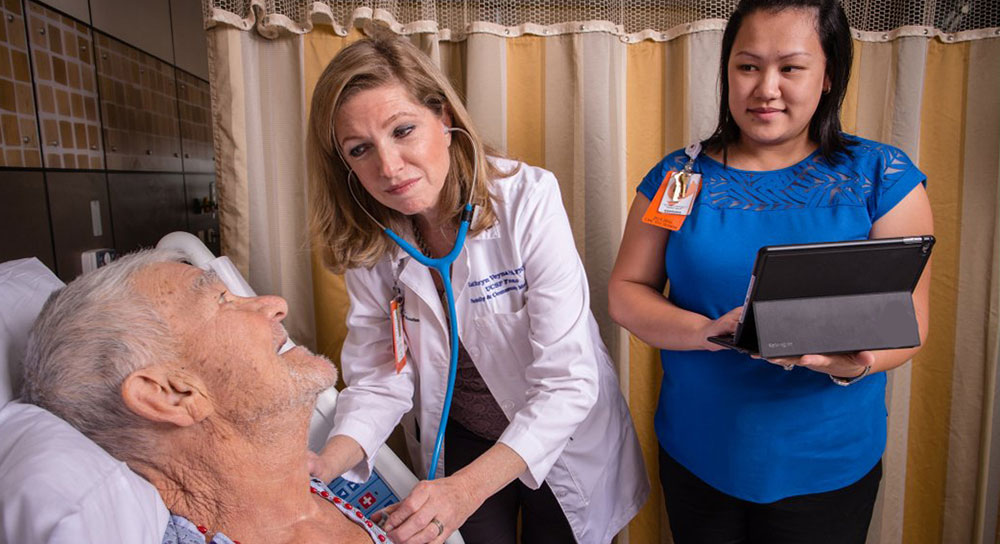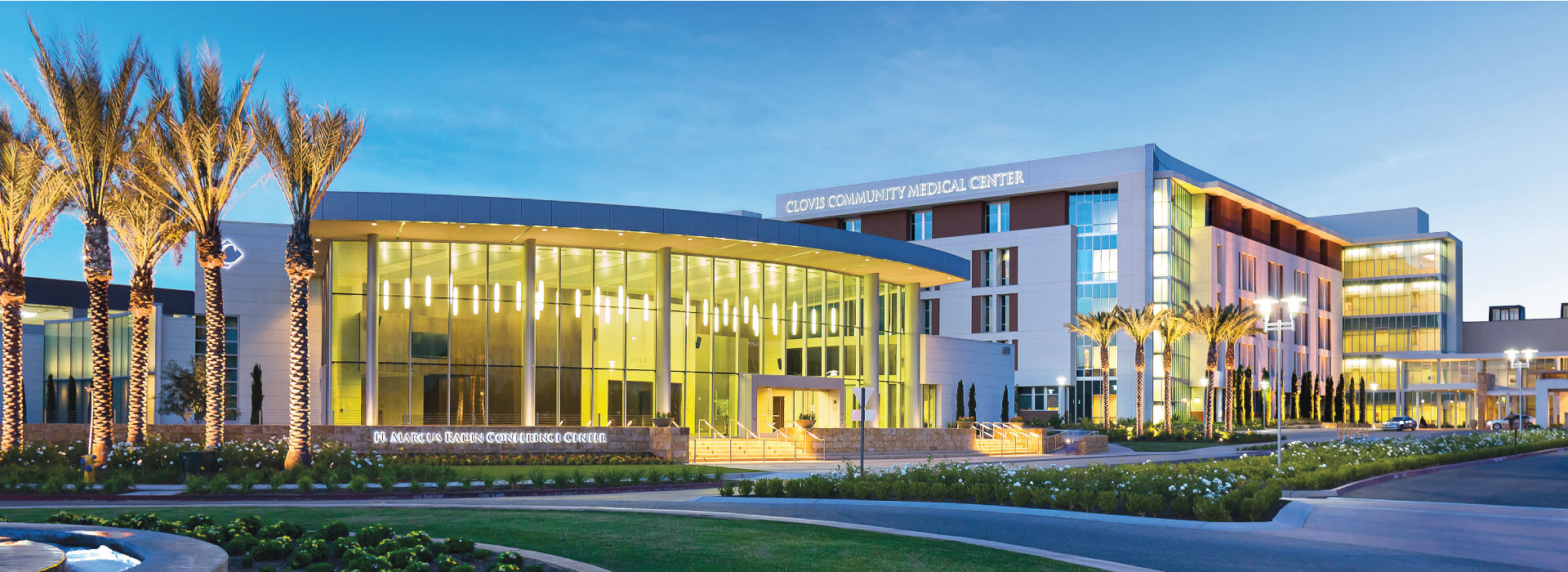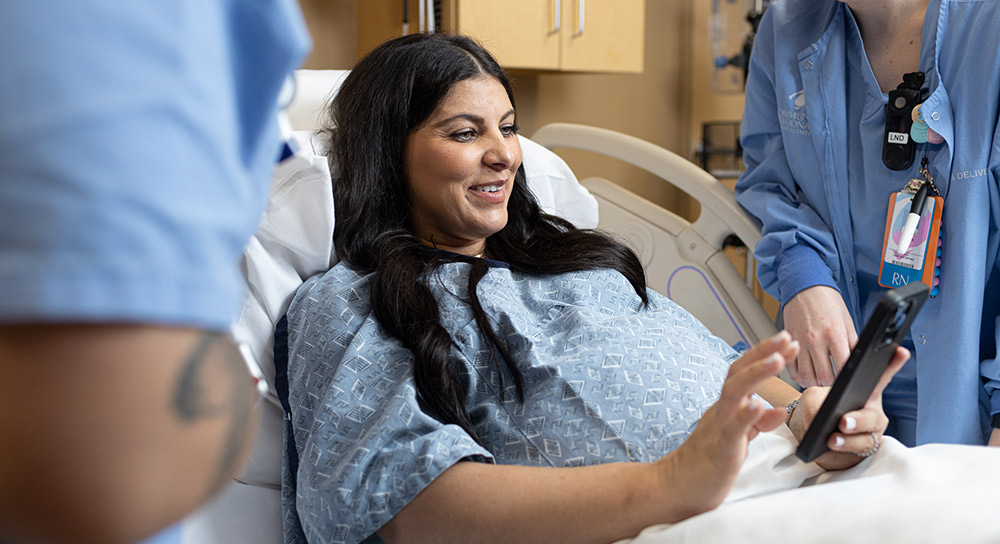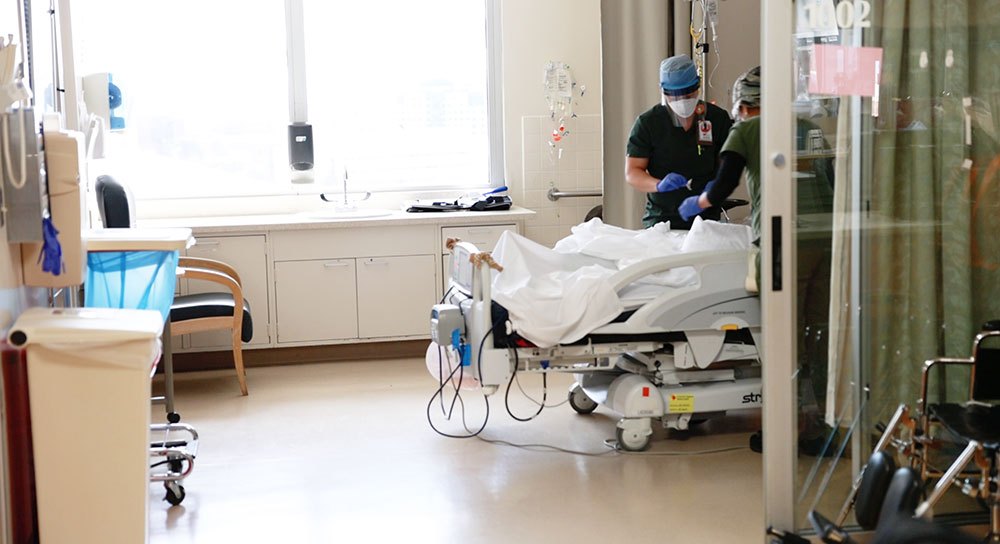“I call it the ‘two days of hell’ prior to that of going to lab and to radiology clinics, the physicians’ offices to collect all these paper records and films and put them all together,” describes Franklin. “We had 15 minutes with a series of specialists at this health center to do the evaluation and set the treatment.”
After going through the records spread out before them, the specialists announced they had bad news: one of the previous medical offices had provided the wrong medical records. “They were dated records,” Franklin explains, “so the specialists were needing to make a recommendation off of dated information, and they did the best they could.
“I remember sitting there listening to this consultation for my family member thinking, ‘We can do better than this for patients,’” says Franklin, who still chokes up thinking about how things could have gone wrong for his loved one.
Significant investment to connect medical records, change practices
Franklin, along with then Chief Information Officer Craig Castro, helped convince Community’s Board of Trustees in 2007 that the Valley’s largest healthcare provider needed a state-of-the-art electronic medical record (EHR) system.
“The board actually committed half of Community’s known capital at the time to invest in this information technology system,” says Franklin. “It was unprecedented, from my perspective, to see that level of board commitment over a seven-year period to do all the training and changes necessary for that full implementation.”
A decade after the first clinics and hospital went online, Community, through its health record system, Epic EHR, has exchanged patient information with more than 2,000 hospitals and 43,000 outpatient clinics nationwide. Annually, more than 4 million secure messages are sent between medical providers about their patients’ health status, next steps for care, medications and treatments.
Hospitals that use the Epic EHR hold the medical records of 54% of patients in the U.S., according to the healthcare software company Epic. In the Central Valley, regardless of which electronic system a doctor or hospital uses, most can securely share patient information because of an effort spearheaded by Community to interconnect health organizations across four counties.
Today, nearly two-thirds of Valley residents have what’s called an “interoperable patient record” that’s immediately viewable and able to be added to by care teams throughout the region and even the nation. And unlike the two days of “record-gathering hell” he went through before meeting with cancer specialists, Franklin says, this interaction happens “without the patient needing to do anything."
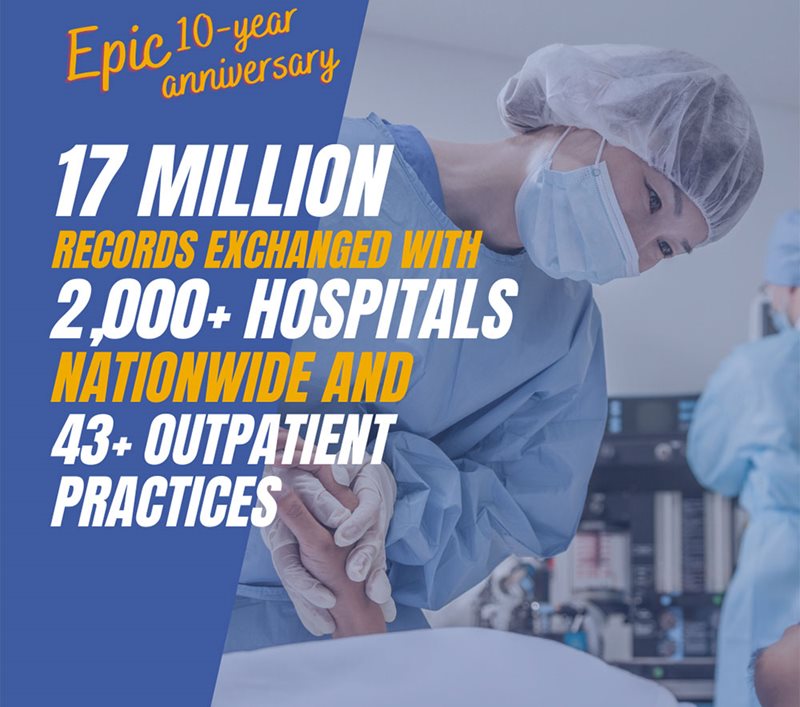
“And over the last 10 years, we have done that 17 million times for patients,” he continues. “So, 17 million times a caregiver was able to make a care decision based on the most current information regardless of where the patient had been seen and regardless of the results.”
From paper charts to instant information access
When Dr. Hagop Afarian began practicing emergency medicine 15 years ago at Community Regional Medical Center, the process to gather a patient’s medical history used to be painfully slow.
“In the emergency department, we have a lot of patients who arrive who are unconscious or unable to tell us what’s going on or what their medical history is and there may not be friends and family available to give us that additional history,” explains Dr. Afarian, Community’s associate chief medical informatics officer.
“If I knew they had been in our facility before I would’ve had to call down to medical records and it might take hours to get that paper chart sent up, and then I’d sit and flip through pages of information,” he continues.
If by chance Dr. Afarian had information the patient had come from another hospital or had a procedure there recently, he called that outside facility to have them fax over the patient’s information. It might take hours he didn’t have with a patient in critical condition.
Now after inputting a patient’s name, birth date or social security number, Dr. Afarian says, “at the click of a button I can tell what illnesses a patient may have, what medications they’re on, what allergies they have, what tests have been done, what treatments have been given.”
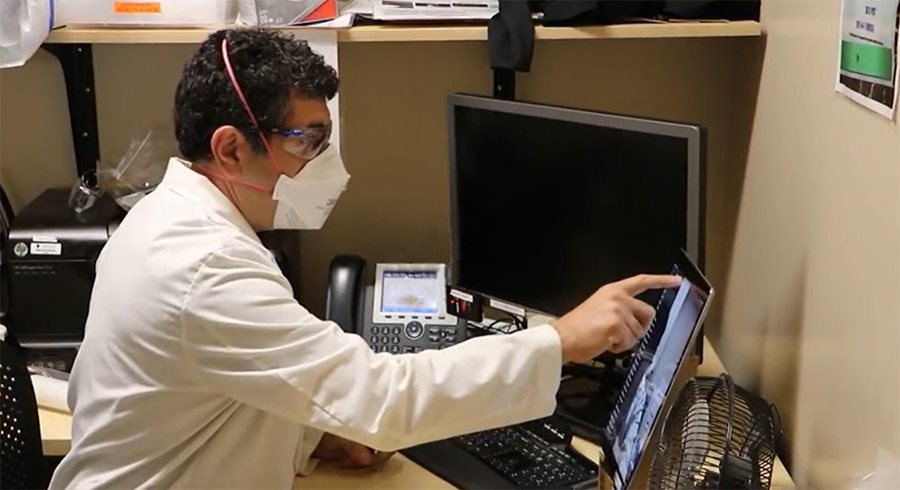
He continues, “I can see just a week ago they were at some other facility and that they had a CT scan, that they had a stroke, or that they’ve had a seizure. And I can use that information to help guide their care in the moment when they’re unable to talk to me.”
He adds, “In the COVID era the EMR [electronic medical record] has been essential … We can know as patients are arriving whether they’re vaccinated or not, whether they’ve had COVID or not, whether they’ve been tested recently. And by having that information we can now isolate them from other patients.”
And for one patient that instant access was a lifesaver. “He arrived unconscious with a scar on his chest and we didn’t know what it was from,” Dr. Afarian describes. “By looking at the electronic medical record we were able to see it was actually the aorta that had been repaired. Without that we would’ve been lost trying to figure out the condition he had. To look at the information with the click of a button changed that patient’s life.”
Franklin calls the switch from paper charts to putting everything into a computer “one of the biggest transformations we have done within Community in the last few decades.”
Patients’ own records in the palm of their hands
In addition to making records instantly available to doctors and nurses, Epic also provides a patient portal called MyChart where people can view their previous doctor visits, next appointments, tests that have been ordered for them and which medications have been prescribed.
“You can even see the actual notes, the words the physician wrote about your health, so you can review what they expect you to do in terms of follow up from that appointment,” says Dr. Afarian.
In the Community system, 99% of all doctors’ notes are released to patients now. Health systems across Epic have shared that patients are understanding and engaging more in their own care with this kind of access.
Paul Wilson, 79, a patient at the Community Cancer Institute, says he now expects to see all his health records and lab results instantly in one place through Epic’s MyChart.
After a recent dermatologist visit didn’t show up in MyChart, the retired project manager for rocket research complained to his oncologist: “I said, ‘This is baloney. When I was in NASA if somebody knew that something wasn’t right or what the results were, I could bring up that information on my computer. It didn’t matter if you were in Richmond, Virginia, or if you were in the middle of the desert.”
And now instead of calling a physician to leave a message about any questions and then waiting for a doctor’s phone call, MyChart provides a secure and private way to electronically message medical providers.
“That has really helped communication between patients and their provider,” Franklin says. “And it’s helped the patient have some peace of mind about their care and know what to do.” He adds that MyChart messaging has also eliminated telephone tag and unnecessary office visits.
Electronic health records increase safety, expedite latest treatments
In the 10 years since health information became connected and instantly available, Community has used the Epic system to improve patient safety.
Now hospital identification bracelets include bar codes corresponding to an individual patient’s electronic medical record. Before a nurse administers medication, the patient’s wristband is scanned to match the patient to the medical record and ensure the right patient is receiving the correct medication via the right path and the right dose at the right time. The medication bottle or dose also has a barcode on it that’s scanned to record instantly what was given to which patient.
Franklin notes that Community is in the top 4% of hospitals using Epic barcode scanning like this to improve medication safety.
Community’s doctors and nursing staff have also developed a way to automatically prompt patients in their MyChart about needed screenings based on their age or health factors.
For patients over age 50, those prompts to schedule a colonoscopy have resulted in a big increase in colorectal cancer screenings that help save lives with early detection. “We’re near the top of all Epic organizations in the country in terms of how effective we are at this,” Franklin says.
“The next step is we are now able to use the patient’s information to predict what care might be needed in the future,” he continues. “We can predict the hospital admissions risk based on 18 factors in a patient record … And we can provide that to your primary care physician so they can help you stay out of the hospital.”
Electronic records prove vital during the pandemic
Hospital physicians became increasingly reliant on the electronic medical record system during the pandemic. Besides being able to know if patients had tested positive previously for COVID-19 and being able to appropriately isolate them, the electronic system has guided urgent, critical care.
“Therapies and treatments for COVID have been changing minute by minute and it is very difficult for any physician to keep up on what the latest treatment modalities are and what works and doesn’t work,” explains Dr. Afarian. “Now I run and look for trends among COVID patients across the country and can adjust treatments … Something that in the past would’ve taken weeks to months or even years, we’ve shortened to minutes or hours.”
Through Epic, Community participates in a national clinical database with 140 million patient records. That collaborative allows doctors within minutes to look up what the most common medications prescribed for certain conditions and types of patients, Franklin explains. “And if a care team encounters a very, very unique situation, the database allows you to go in and find a patient that’s as close as possible to that unique patient and you can see how that other patient was cared and what the outcome was.”
When doctors go into the electronic health record system they also see already-provided treatment pathways and medication orders for various conditions. “We can update these on the fly as the information is changing (on COVID-19),” Dr. Afarian says, “so physicians, nurses, staff can go to the order sets and use the most up-to-date information to care for their patients.”
This is the difference Franklin had hoped for years ago sitting in that cancer consultation with his loved one. “One of the primary drives for having an electronic health record is to make sure that your patient information is up-to-date and immediately available to any care team that needs to care for you regardless of where you are, whether that’s in the Community Health System or beyond,” Franklin says. “And that has been my driver for the last 15 years.”
Community’s Commitment to Advancing Clinical Quality
Our mission of improving the health of our region is dependent on continually enhancing our medical expertise. We aim to rank among the nation’s top hospitals in delivering measurable quality care and investing in best practices and innovative technology. Read more stories.



